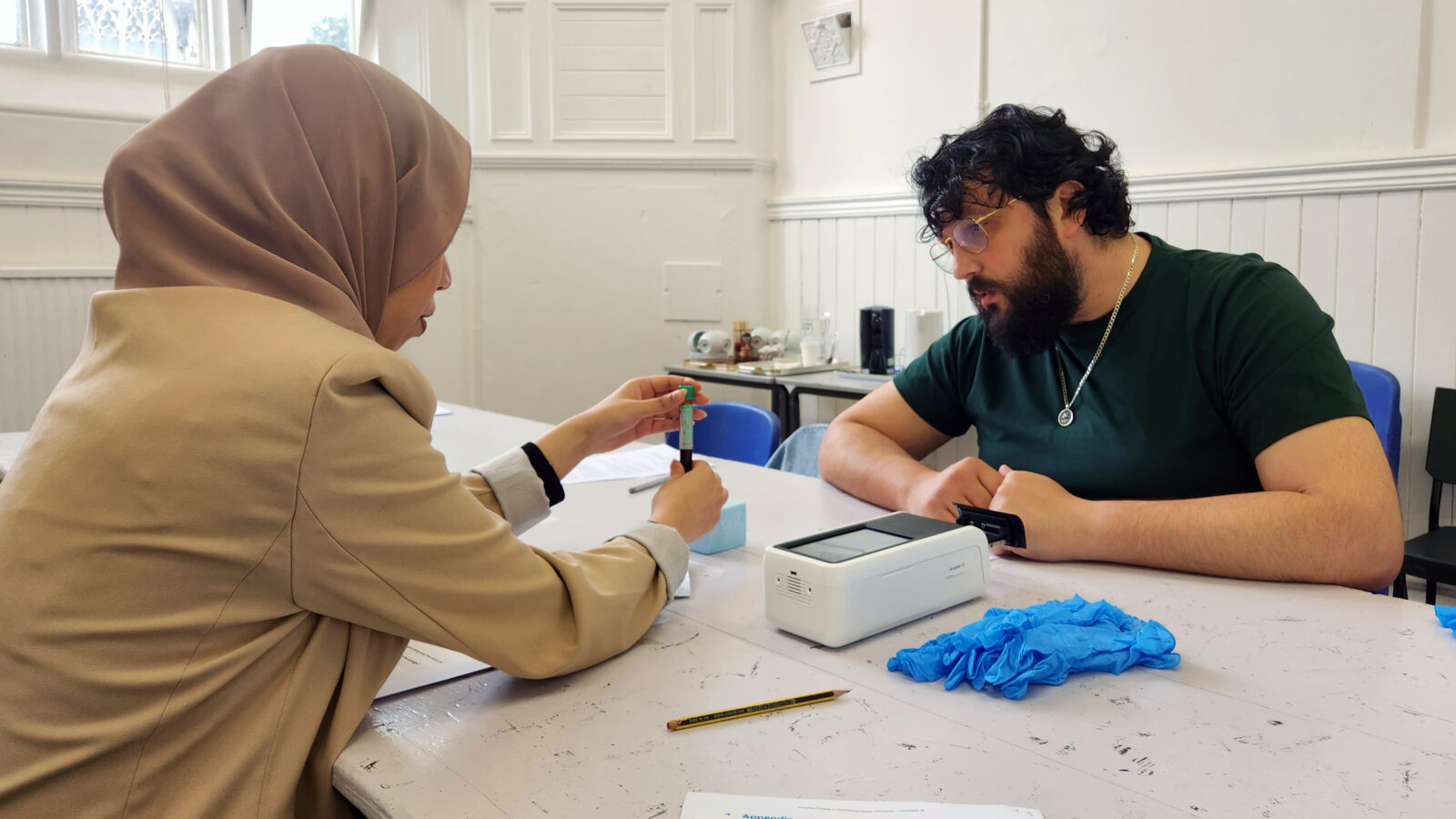Point of Care GUI Development
Invitron
- Focus:
- 医療機器開発
- ユーザー中心デザイン
In emergency healthcare, time is critical, and rapid diagnosis not only enables prompt treatment but can also help alleviate patient anxiety. In a multistage project with Invitron, we conducted research with patients and healthcare providers to understand their emergency healthcare experiences and inform further development of Invitron’s diagnostic device. The device brings cutting edge laboratory testing technology into a quick and convenient, handheld analyser; circumventing waiting times by providing results at the Point of Care instead of relying on hospital labs.
Invitron is a UK-based biotechnology company, producing diagnostic test kits that deliver highly sensitive results using finger stick samples. Invitron approached us to undertake a programme of research, user testing and development on their Point of Care diagnostic device. This enabled a formative evaluation and supported the development of the device, its user interface and the overall user experience. The device delivers rapid results for a number of biomarkers that aid in the determination of necessary care; for this project we investigated the device’s Troponin testing application, the biomarker used in the diagnosis of heart attacks.
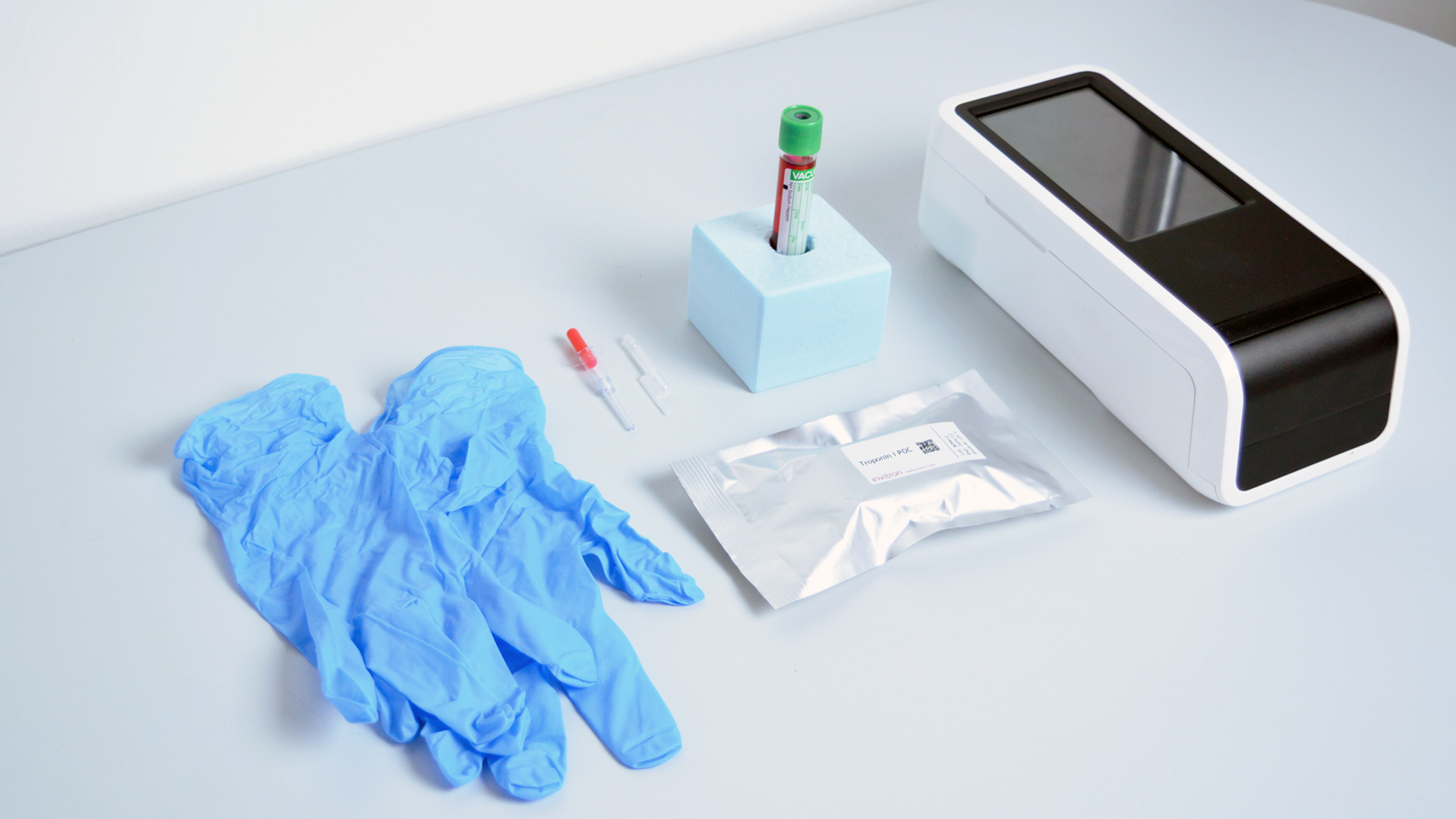
CONTEXTUAL EXPLORATION
We began by building an understanding of the landscape by researching competitor diagnostic products and reviewing clinical pathways for heart attack diagnosis. We worked with Invitron to understand the device’s uses, the intentions for its adoption into healthcare systems and projected future use cases. To understand and absorb as much of Invitron’s expertise as possible, we facilitated a knowledge sharing workshop with key stakeholders from Invitron where we were able to compare and contrast the user and patient journeys for traditional troponin testing and Point of Care troponin testing. We also explored future applications for the device by examining potential future users and how they might use the analyser in their professional context.
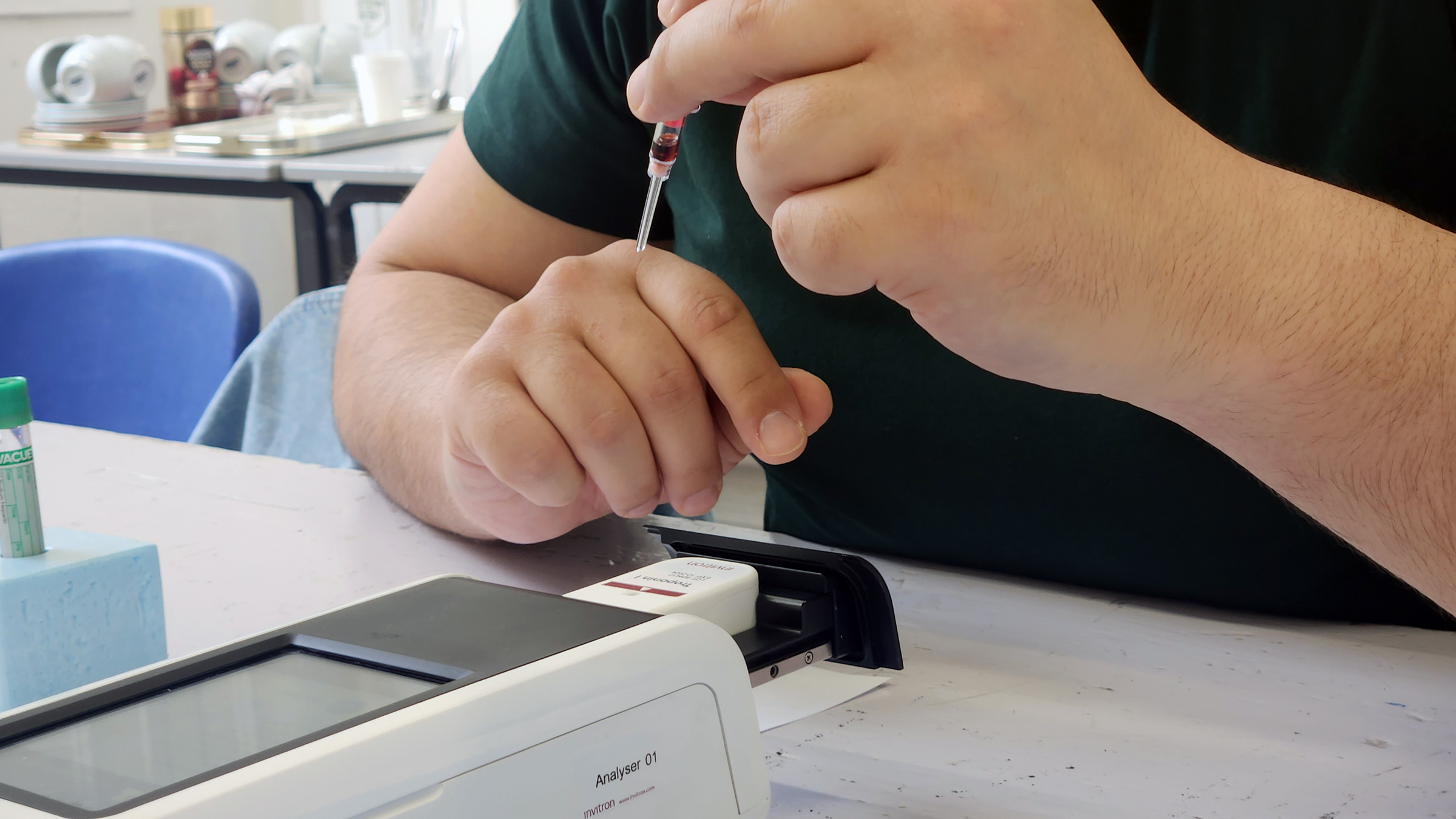
PATIENT EXPERIENCES
Building on insights from our foundation research, we designed and conducted a qualitative survey of real patients who had experienced emergency healthcare for symptoms indicating a heart attack; and who therefore would have been candidates for Point of Care troponin testing.
We recruited an equal spread of patients who were subsequently diagnosed with a heart attack and patients who had a heart attack ruled out, to assess the effect Invitron’s device could have on the patient experience in both scenarios. This research aimed to provide patient input into Invitron’s development process and to assess the potential value of Point of Care testing in real patient journeys. Findings were documented in a comprehensive report, evidencing the involvement of patients in the R&D process.
FORMATIVE USABILITY TESTING
To evaluate the current device and GUI, and provide guidance for the next generation design, we conducted formative usability testing with six emergency healthcare practitioners; the projected key users of the diagnostic device. Each test began by establishing information on the participants background and relevant experience before asking participants to perform a series of set of tasks using a working prototype device. Tasks the participants could not complete or did not complete without error highlight immediately apparent usability issues. By utilising a think aloud protocol we were able to gain deeper insight into more subtle pain points and potential issues that could occur in a real use context, such as an A&E department.
Our formative usability report was able to highlight areas for improvement and provided guidance for further development of the device’s physical design and graphical user interface workflow.
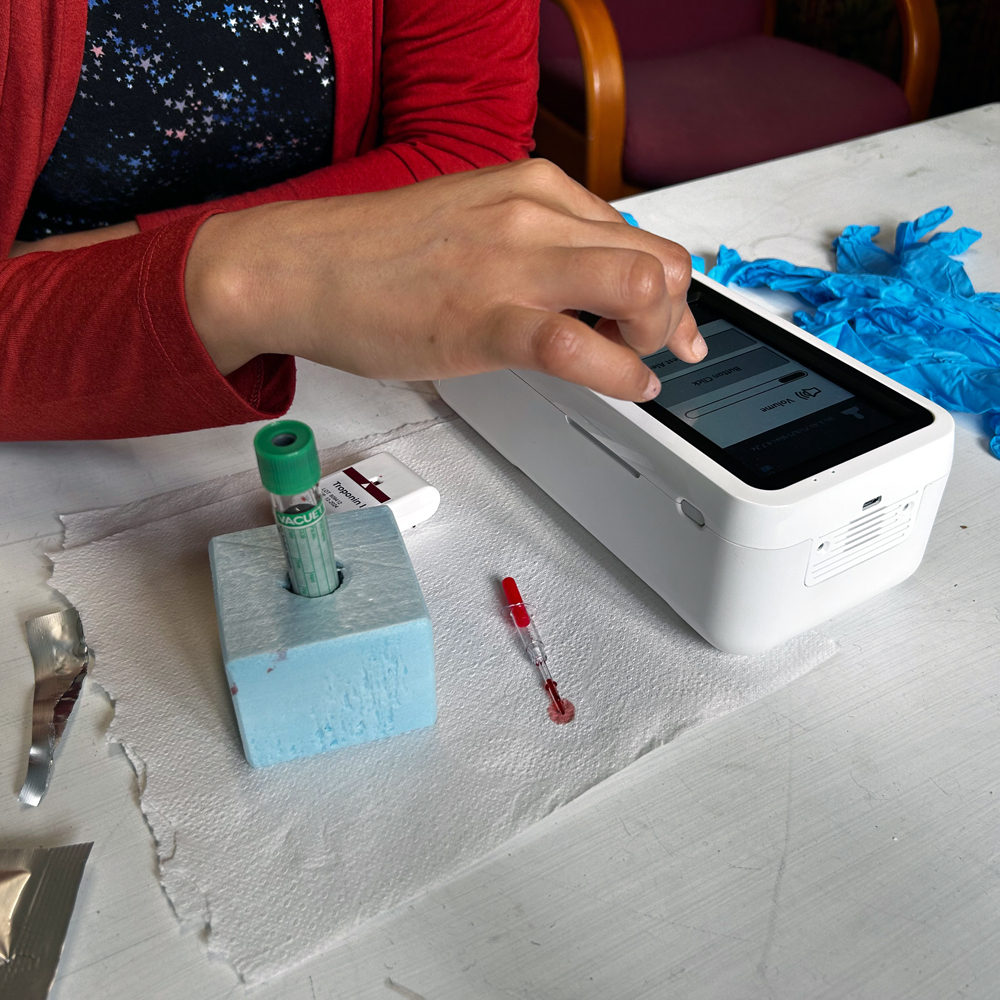
GUI DESIGN & DEVELOPMENT
Equipped with our findings from formative testing and starting with the architecture of the existing GUI, we began to make structural changes to mitigate pain points and design for the fast-paced context of an A&E environment. Alongside the changes and updates we were making to the interface, we began by developing detailed use cases, investigating associated risks, errors, and failure modes to ensure a thorough understanding of user interactions.
To establish a solid foundation for the GUI redesign, we developed wireframes and architecture based on best practice protocol. These were iteratively reviewed in-house and in collaboration with Invitron, allowing us to identify and address potential usability issues, and continuously refine the GUI.
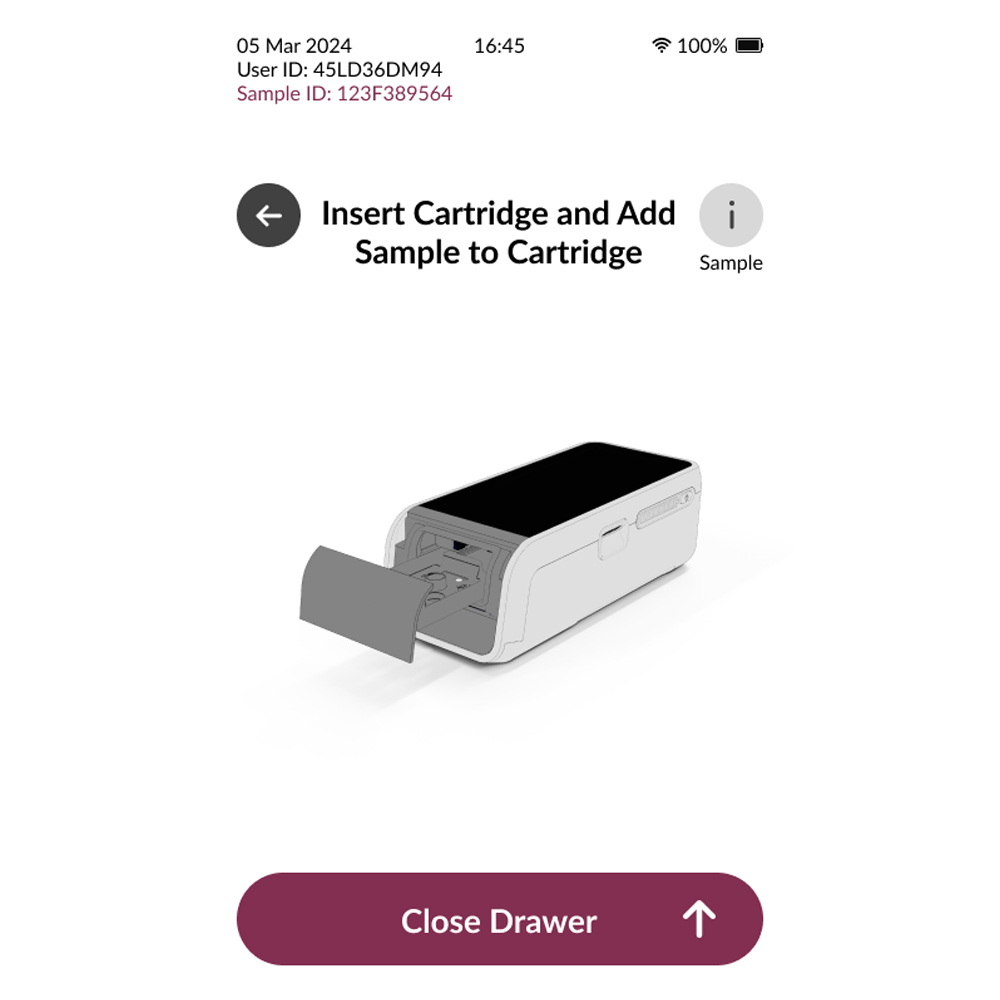
Building on the refined wireframes and architecture, we developed a graphic design direction and style guide, ensuring consistency and a cohesive visual identity that aligns with Invitron branding. The visual design created a strong hierarchy of actions, giving the user a clear path forward through the process.
The user-centred design approach we took to this project and the iterative process of translating insights into action provided valuable understanding of the design challenge and informed the on-going development process of the Invitron diagnostic device. Gathering insight through direct engagement ensured the delivery of a more intuitive user interface that meets the practical needs of emergency settings and is future-proofed for the variety of possible users and contexts of use.
“Invitron’s diagnostic technology has the potential to transform patient care, but successful implementation depends on its ability to fit seamlessly into clinical practice. PDR’s primary research has provided invaluable insight into the practical application of our new device and underscores the necessity of developing a product that not only delivers rapid results but also simplifies and improves workflows in demanding healthcare settings.”
Andrew Woodhead | CEO | Invitron

